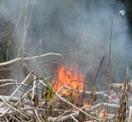Urbanization & In-Migration
According to the Peruvian National Census, in 2007 more than 75% of the population of the Ucayali Region lived in urban places; in 1963 only about 55% did (INEI 2008). Due to inmigration from neighboring rural areas and from outside Amazonia as well as through natural growth, the population of Ucayali’s largest city, Pucallpa has been increasing rapidly; between 1961 and 1993 it grew more than six-fold (Santos-Granero and Barclay 2000:286) and now numbers about 300,000 (with contiguous Yarinacocha). More than half the population of Pucallpa, resides in informal or squatter settlements, known as asentamientos humanos ( AA.HH. ) .
While the level of urbanization in the Region is indeed surprising, the complex nature of migration towards urban areas must be noted. People in the region, like elsewhere, are classified as residing in either urban or rural places, but researchers around the world (e.g.,Tacoli 2002, Smit 1998, Rigg 2003), have suggested that the distinction has little meaning. Apparently discrete rural and urban categories in Amazonia are indistinct; Brazilian urban geographer Bertha Becker famously described all Amazonia as an “urbanized forest” (1985). A great many newly urban households are “multi-sited”, “multi-local”, or dispersed; they maintain houses and economic activities in rural areas as well as in the city (Padoch et al. 2008).
Our preliminary research have shown that many families have at least one household member engaged in rural economic activities and many of them continue to maintain a home in a rural village where they still plant crops, keep livestock, and maintain a host of other activities (Padoch et al. 2008b). This pattern of household dispersion and circular migration affects the use and control of fire in rural households and communities. Although fires can be a cheap, labor-saving way to clear and manage land, the increasing number of young and able individuals living, at least part-time in the city may lower the ability of households to control the fires they or their neighbors ignite. Communication among neighbors concerning fires may also be declining, as economic and social differences become more pronounced, overall social cohesion deteriorates, and mutual concern among households weakens (Simmons et al 2004, Toniolo 2005).
Strong migratory flows from outside Amazonia are another trend that we believe has negative impacts on the social capital or social cohesion of rural communities and rural areas as well as on knowledge of how fire may be used safely under Amazonian conditions. A recent national census show a slight decline (0.4%) in in-migration to Ucayali from other Regions of Peru (INEI 2008:77) but, we believe that the census figures may seriously underestimate migratory flows, since many migrants from Andean and other areas are probably not counted as they come to engage in clandestine activities in remote areas of Ucayali. A recent plan for the development of the Region, lists in-migration for coca production and traffic as #1 among the eight reasons why migrants are moving to Ucayali. Most of those who come to engage even temporarily in this clandestine activity are from the Andean regions of Junin, Pasco, and Huanuco (Gobierno Regional de Ucayali 2007:235-6), from areas with ecological patterns and agricultural traditions that differ markedly from Ucayali realities.
The project will examine these trends of urbanization and in-migration and their effects on fire spread .
